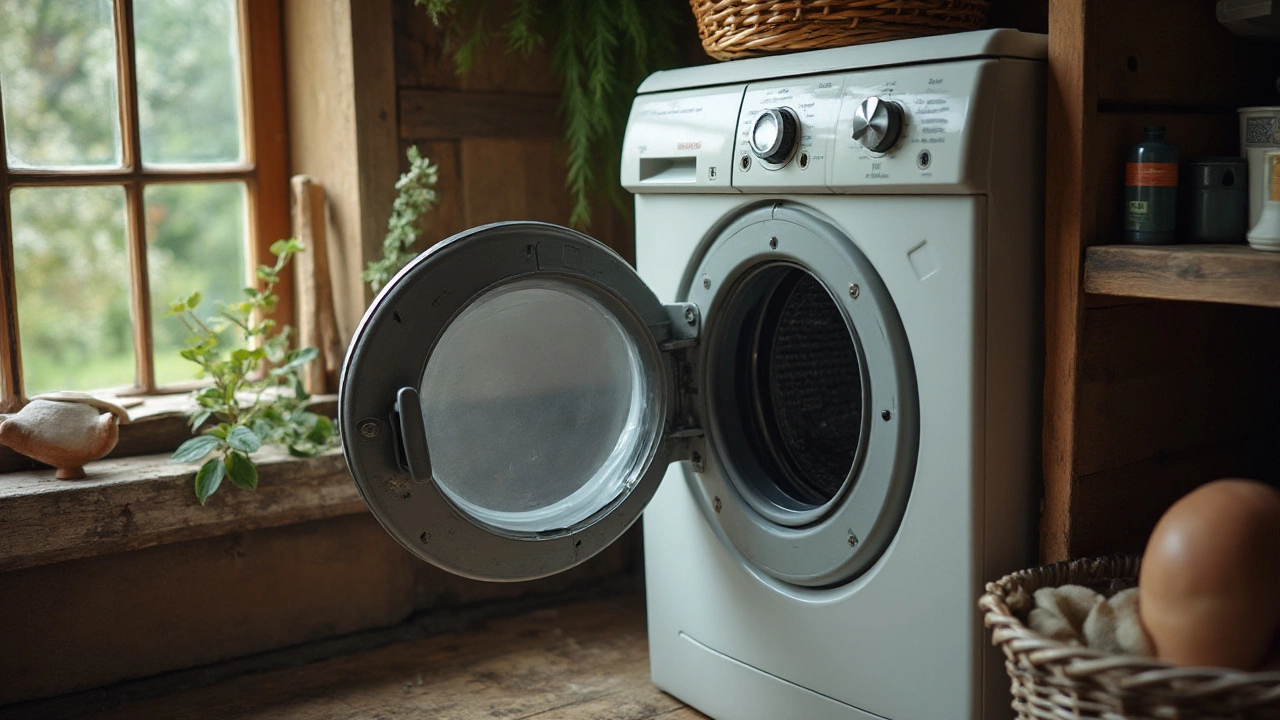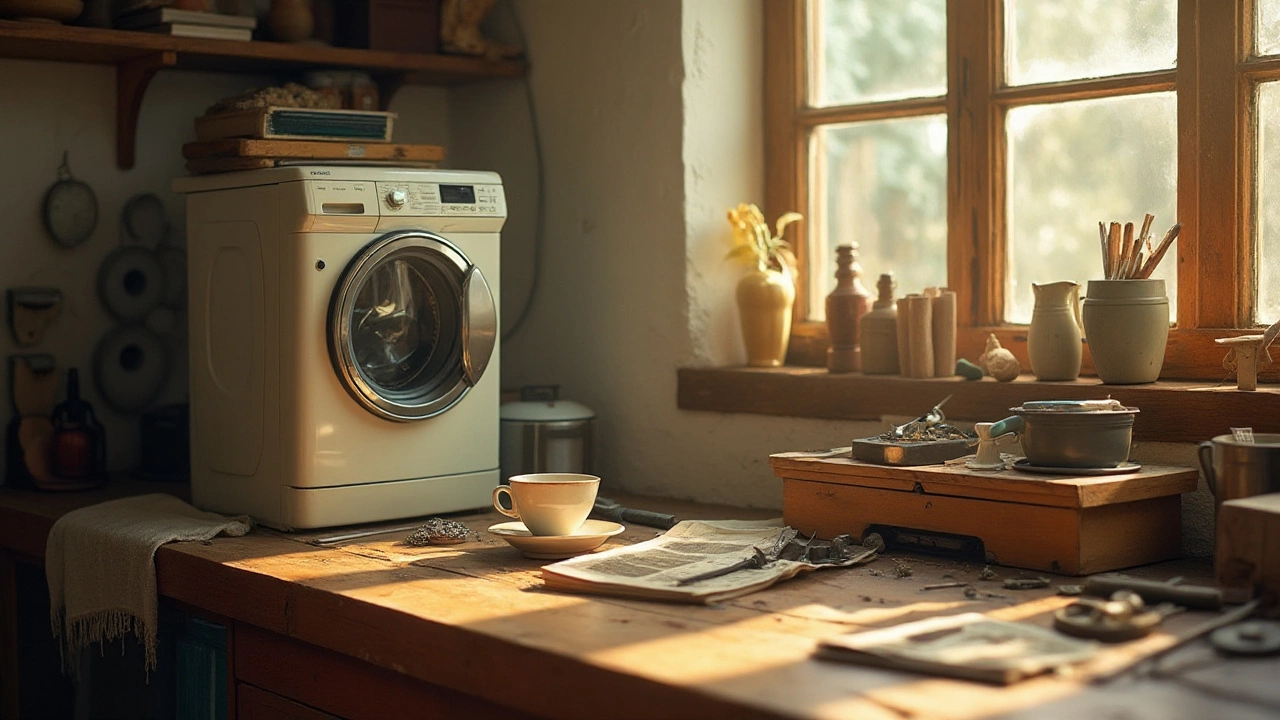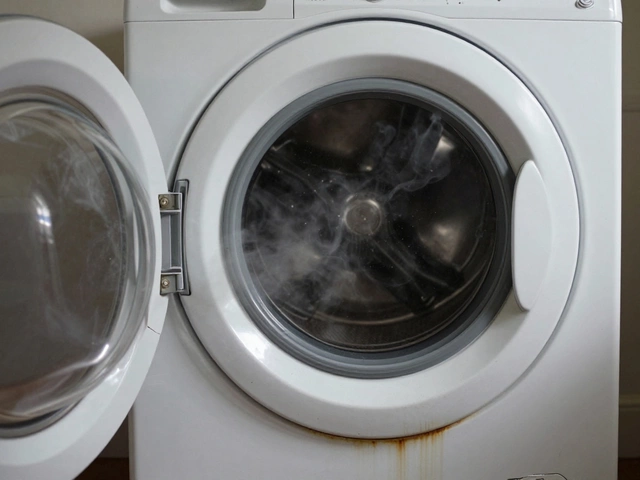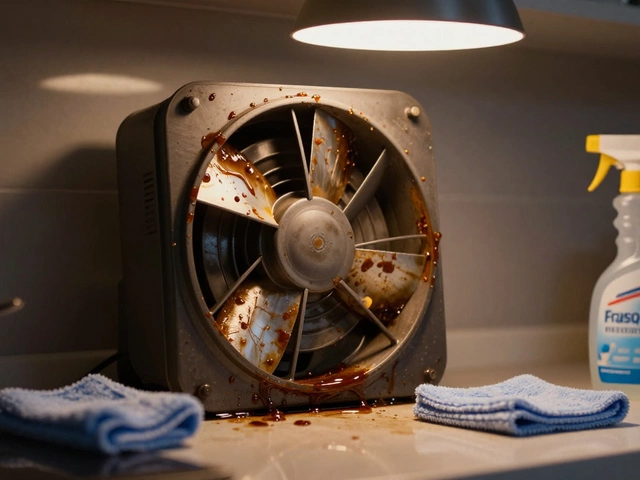Washing machines are an essential part of modern household routines, but they can sometimes present frustrating challenges. Recognizing the most common failures and knowing how to tackle them can make a big difference in ensuring your washer's longevity.
Some typical issues include water not draining properly, the drum not spinning, and unusual noises during cycles. These can be caused by anything from clogged hoses to faulty door switches. Learning to identify and fix these problems yourself can be quite empowering and save costly service fees.
In this article, we'll guide you through the various types of washing machine problems, offer diagnostic tips, suggest maintenance practices to prevent breakdowns, and present solutions you can try at home. And if things get too tricky, we'll also help you decide when it's best to reach out to a professional.
- Frequent Washing Machine Problems
- Diagnostic Tips for Washer Issues
- Effective Maintenance to Prevent Failures
- DIY Repair Strategies
- When to Call a Professional
Frequent Washing Machine Problems
When it comes to washing machine issues, a few common culprits often rear their head. One of the most frequent problems is the washer not draining properly. This can happen due to a clogged hose or a malfunctioning pump. Over time, debris like lint, coins, or hair can accumulate and block the drainage system, stopping the water from exiting the drum efficiently. Another typical issue is the drum refusing to spin. This can be traced back to several factors, such as a broken belt, a burnt-out motor, or even simple overloading of clothes. Ignoring these signs might just lead to bigger, more expensive repairs.
Noisy wash cycles can be more than just an annoyance; they might signal underlying problems too. Whether it's a thumping sound or a persistent squeak, those noises could point to issues like unbalanced loads, worn-out drum bearings, or foreign objects trapped in between parts. Regularly checking the pockets of clothes or keeping a keen ear for unusual sounds during a washing cycle can help in catching these problems early. Another notorious problem maker is a leaking washer, often caused by loose connections, worn-out door seals, or cracked hoses. Ensuring that everything is fastened tightly and inspecting for cracks routinely can ward off these nuisances.
"A little proactive maintenance can save a lot of trouble down the line," advises appliance expert John Thompson. "Many of the common washer failures could be prevented by simply being more observant and responsive to the symptoms that your machine exhibits."
The control panel also sometimes pitches in its fair share of troubles, especially in newer electronic models. Error codes might flash, and though they look intimidating, they're essentially your machine's way of communicating what's wrong. Manuals usually have a section dedicated to these codes, helping you diagnose whether the issue is with the door not being closed properly or a more intricate electronic failure. Addressing these promptly is a good practice, as delaying can escalate the problem into something much more serious.
Finally, there’s the issue of washer odor, an often-overlooked problem. With the right conditions – warmth and moisture – your washing machine can turn into a breeding ground for mold and mildew. This not only causes unpleasant smells but also poses health concerns. It can affect laundry too, imparting an unwanted mustiness to freshly washed clothes. A routine cleaning with mild bleach or vinegar can keep these at bay. When striving to tackle and hopefully prevent some of these washer repair tips, consistency and attentiveness are key. Making it a habit to monitor your washing machine for any unusual activity or symptoms pays off in the long run.
Diagnostic Tips for Washer Issues
When your trusted washing machine starts to show signs of trouble, knowing where to start the diagnostic process can save both time and sanity. One of the first things to consider is the nature of the problem. Is the machine not turning on, not filling with water, or are the buttons unresponsive? Identifying the specific issue can guide the troubleshooting process significantly.
The next step is often to check the power supply. Surprisingly, a lot of washer problems stem from power issues. Ensure that the unit is properly plugged in and that the outlet is functioning. A simple yet sometimes overlooked trick is to press the reset button, if available. These steps are quick and can often resolve minor power hiccups without much fuss.
Water-related issues demand a different approach. Inspecting the hoses for kinks or obstructions is crucial. If water isn't entering the washer or fails to drain, there might be a hose blockage. Sometimes small articles of clothing or debris can lodge inside, and a careful inspection can reveal the source of the problem. Additionally, ensure that the water tap is turned on and functional. The absence of water can understandably halt operations completely.
As noted by Consumer Reports, 'Regular maintenance and inspection not only extend the life of your appliance but also prevent small issues from becoming costly repairs.'
Strange noises often point to mechanical issues within the washer. A thorough inspection of the drum and surrounding components can unveil potential issues, such as worn bearings or a misaligned drum. These components endure a lot of stress, and wear and tear over time are to be expected, especially if the machine handles heavy loads frequently.
Electronic display problems generally require a bit more technical savvy. Carefully examine if there's any error code displayed. Most modern washing machines have built-in diagnostics that can point to specific faults. Referencing the user manual for these codes can direct you to the issue faster. A little-known tip is to disconnect the washer from power for a few minutes—this can sometimes clear minor electronic glitches, much like rebooting a computer.
In some scenarios, a combination of issues may complicate troubleshooting. If power and water supply checks yield no results, and there's no display of error codes, you might be dealing with multiple minor faults. Patience and systematically tackling one issue at a time, from power checks to hose inspections, increase the likelihood of finding a resolution. Remember, if these self-help techniques don't fix the issue, it might be time to consult a professional, as deeper mechanical or electrical problems might be at play.

Effective Maintenance to Prevent Failures
Ensuring that your washing machine continues to perform at its best requires consistent and effective maintenance. By keeping on top of these tasks, you can extend the life of your appliance and avoid some of those dreaded mid-cycle breakdowns. Maintenance might seem daunting, but it's often a simple process that can save you lots of headaches down the line.
Routine Cleaning
Regular cleaning is one of the simplest ways to prevent washer issues. Over time, detergent, fabric softener, and lint can build up inside your machine and lead to various problems. At least once a month, run a cleaning cycle using a commercial washer cleaner or simply use a cup of white vinegar. This helps to break down residue and prevent mold growth, keeping everything fresh. Pay special attention to the detergent drawer and rubber door seal, as these spots tend to accumulate grime and can harbor bacteria.
Inspecting Hoses
Another important maintenance task involves checking the water supply hoses. These should be inspected regularly for signs of wear, such as cracks or blisters. It's recommended to replace the hoses every five years even if they appear to be in good condition, as they are a common source of leaks. When replacing them, choose stainless steel braided hoses for added durability, as these are less prone to bursting than regular rubber hoses.
"Proper washer maintenance is not just about cleaning the machine; it's about ensuring each component is in working order to prevent future issues," says Emma Larkin, a professional appliance technician with over 15 years of experience in the field.
Balance the Load
Ensuring that your washer is loading properly is crucial for its longevity. Overloading the machine can put a lot of strain on the motor and drive belt, leading to premature failure. Make sure to distribute clothes evenly around the drum to avoid unbalancing, which can cause loud thumping noises and unnecessary wear. If your machine often gets unbalanced, consider using smaller loads or recalibrating the washer.
Ventilation
Good ventilation is key to avoiding mold and musty odors. After each laundry load, leave the door open for a few hours to allow any remaining moisture to evaporate. This will significantly reduce the chances of mildew growth inside the drum. If possible, keep the laundry area itself well-ventilated to promote air circulation and lower humidity levels, which is especially beneficial if your washer is located in a basement or other damp area.
Checking the Filters
Regularly check and clean the lint filter if your machine has one, as this can improve performance and efficiency. Similarly, inspect the water pump filter, which is often found near the base of the machine. It can become clogged with small items and debris over time. Simply remove the filter and wash it under running water to remove any blockages, ensuring the water flows properly during cycles.
DIY Repair Strategies
Tackling washing machine problems on your own might seem daunting at first, but with the right guidance, you can handle many washer repair tips yourself. Before diving into any repairs, it's crucial to unplug the machine and turn off the water supply for safety. Now, let's explore some DIY strategies to help you address common washing machine issues effectively.
One of the primary concerns is a machine that does not drain. This is often due to a blockage in the drain pump or hose. Begin by removing and inspecting the hose for any clogs, which can typically be cleared with a simple hand or a plumber’s snake. If the pump is the issue, disassembling it to clear the obstruction takes a little patience but is certainly feasible. Jay Ahern, a renowned appliance repair expert, once said, "A clear path ensures a seamless cycle." And this couldn't be truer when it comes to maintaining a washing machine's drainage system.
If the drum isn't spinning, it may be related to the belt. Over time, belts can wear out or slip from their pulleys. Accessing the belt might require unscrewing the back panel, but once you're in, checking for slackness or breakage is straightforward. Replacing a broken belt isn't difficult; local hardware stores often stock what you need. Make sure the replacement is tightened to the manufacturer’s specifications to ensure proper function and longevity of your appliance.
Odd noises during cycles are another frequent complaint. These are usually due to foreign objects trapped in the drum or near the pump. Coins, buttons, and pins that escape pockets often turn into culprits here. Running a magnet wand along the drum edges can highlight and remove these nuisances, restoring peace to your laundry sessions. Inserting soft rubber pads under machine feet can mitigate noise caused by slight rocking or imbalance, ensuring smoother performance.
While dealing with these repairs, practice some preventative measures. Regularly cleaning the filter, typically located at the bottom front of your machine, can stave off several potential problems. A well-maintained filter enhances the machine's efficiency and life. Ignoring this small task could end up causing draining issues or undue stress on the motor. These simple maintenance techniques help in easing day-to-day functionality and avoiding larger failures.
Finally, always keep your user manual handy. It provides relevant information specific to your model and sometimes offers troubleshooting steps you might not have considered. It can also save time discussing issues with a professional when needed. Should these DIY approaches not resolve the washers' problems, considering professional intervention at the right time will ensure no further damage. In short, understanding your machine and its workings prepares you to face minor difficulties head-on and with confidence.

When to Call a Professional
While tackling washing machine issues on your own can be both practical and satisfying, there are occasions when it's best to step back and seek expert help. Certain situations present risks or complexities better managed by a professional, ensuring your appliance is safely and effectively restored to working order. If you've tried addressing the problem and it persists, don't let frustration mount—consider reaching out to someone with expertise in washer repair.
One of the critical scenarios warranting professional intervention is when there's a mechanical or electrical failure. If the machine doesn't start at all or if it trips the circuit breaker frequently, these may be indicative of electrical issues beyond what a layperson should handle. An expert can safely navigate and fix possible faults in the circuitry or motor. In such cases, it is crucial to prioritize safety over the lingering annoyance of a malfunctioning appliance.
Significant leaks are another clear signal that professional assistance is needed. This could indicate severe internal component damage like a broken drum seal or deteriorated hoses that require replacement. Water damage risk to surrounding areas is considerable, so prompt and skilled repair is essential. Professionals have the tools and parts necessary to address these problems swiftly, minimizing the potential for more extensive home damage.
When complex replacement parts are involved, it's often more efficient to hire someone who knows exactly what they're doing. If your washing machine needs a new transmission, clutch, or tub bearings, these are not typically household DIY jobs. They require specialized knowledge to ensure correct installation and functionality. Incorrect handling might void warranties or cause additional, costly damage to your machine.
Of course, the age and condition of your appliance should also weigh into your decision to contact a professional. Machines older than a decade might not justify an extensive do-it-yourself approach. As appliances age, parts can become difficult to find, leading to increasingly expensive repairs. A qualified technician can not only repair but also advise whether replacement is more economical, potentially saving you undue effort and expense.
House Beautiful notes, "Sometimes the simplest solution is the best one—if your appliance is beyond repair, a professional will help steer you in the right direction.”


